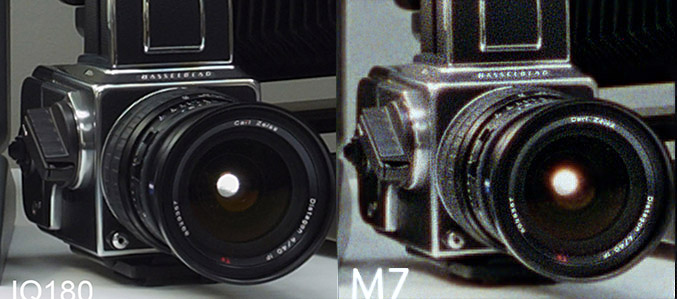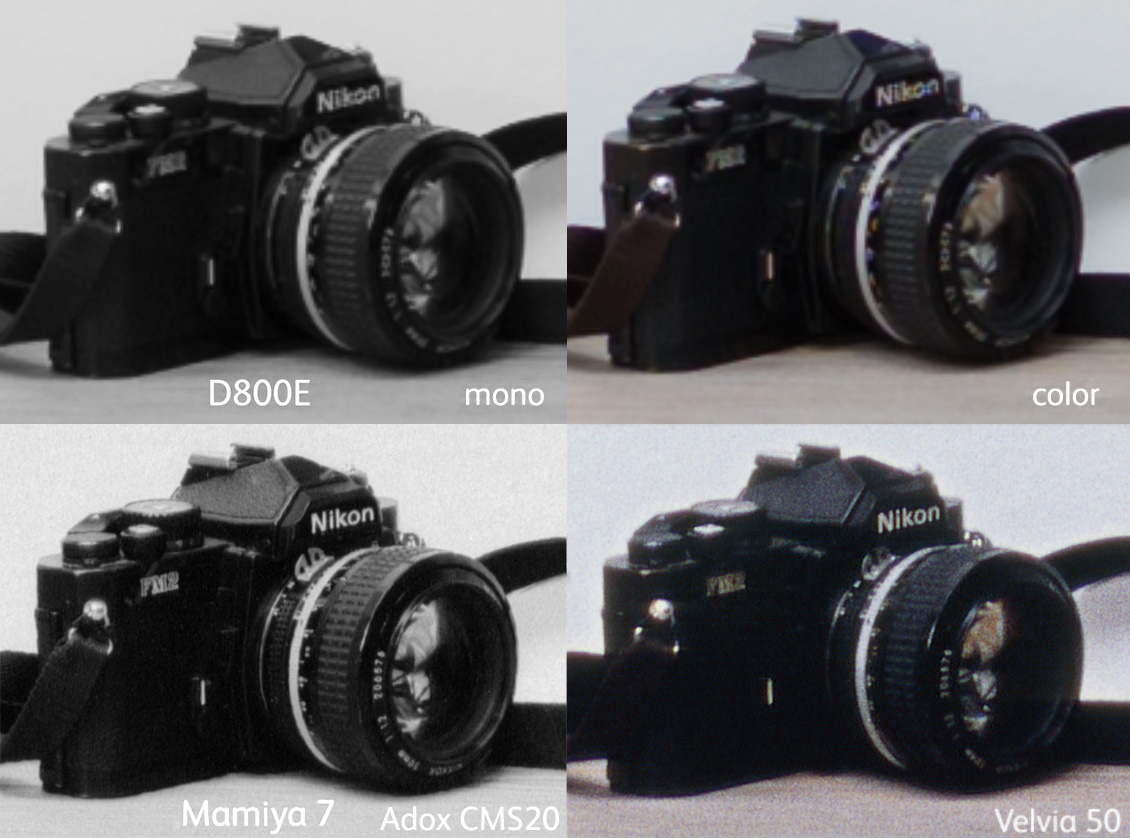I just bought a new scanner, a Screen Cezanne, that is capable of near 6000dpi results and so I thought I'd take a look at the film shot from my 'Big Camera Comparison' on Portra 400 taken with the Mamiya 7.
I have to say I was suitably impressed for a flatbed scanner. Here's the IQ180 against the Mamiya 7 and Portra 400

Bear in mind that you're looking at this sample on a computer screen and the equivalent print size would be about 100"x80" so the bit of grain would be nigh invisible in a 30x40 print (or even a 40x50).
And if you compare the results with a D800E it shows just how much detail the Mamiya 7 can render.

The Mamiya 7 and Adox CMS would out resolve the IQ180 with room to spare - I reckon it's about 120 megapixels, more detail than 5x4 T-Max. The Velvia is somewhere between the D800E and IQ180. I think if I'd used Velvia 100F or Provia 100F the Mamiya 7 would have been equivalent to an IQ140 or IQ160.
The only problem with the screen cezanne, and for that matter all flatbeds, is that they flare from highlights to shadow when scanning transparencies so the only critical solution to get the most of the dynamic range is a drum scan. However for neg scanning an less contrasty chromes the Cezanne is stunning.
Tim
I have to say I was suitably impressed for a flatbed scanner. Here's the IQ180 against the Mamiya 7 and Portra 400

Bear in mind that you're looking at this sample on a computer screen and the equivalent print size would be about 100"x80" so the bit of grain would be nigh invisible in a 30x40 print (or even a 40x50).
And if you compare the results with a D800E it shows just how much detail the Mamiya 7 can render.

The Mamiya 7 and Adox CMS would out resolve the IQ180 with room to spare - I reckon it's about 120 megapixels, more detail than 5x4 T-Max. The Velvia is somewhere between the D800E and IQ180. I think if I'd used Velvia 100F or Provia 100F the Mamiya 7 would have been equivalent to an IQ140 or IQ160.
The only problem with the screen cezanne, and for that matter all flatbeds, is that they flare from highlights to shadow when scanning transparencies so the only critical solution to get the most of the dynamic range is a drum scan. However for neg scanning an less contrasty chromes the Cezanne is stunning.
Tim
